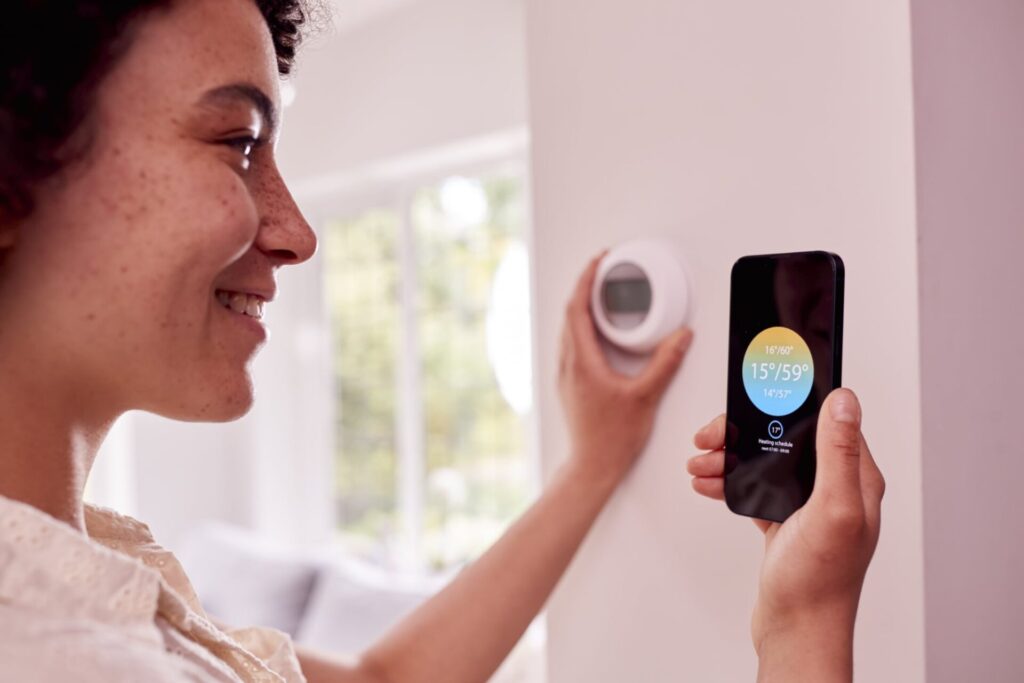Smart thermostats promise energy savings and convenience, but are they worth the price tag? This article will compare two popular options — Google Nest and ecobee — to help you see whether upgrading your home's temperature control makes sense.
What To Know About Smart Thermostats
Smart thermostats, with their Wi-Fi-enabled convenience, take the stress out of managing your home's temperature. Unlike traditional thermostats, these intelligent systems learn from your behaviors, allow for remote access, and can significantly reduce energy consumption.
Google Nest vs. ecobee: A Comparison
Both Google Nest and ecobee are leading brands in the smart thermostat market. Here's how they compare on features.
Google Nest Features
- Design: Sleek, minimalist design with a rotating ring for temperature adjustment
- Compatibility: Compatible with most HVAC systems
- Smart Home Integration: Integrates well with other Google products
ecobee Features
- Design: Touchscreen interface with a more traditional thermostat look
- Compatibility: Works with a broader range of systems, including those with humidifiers, dehumidifiers, and ventilators
- Smart Home Integration: Known for compatibility with various smart home platforms, including Apple HomeKit
The Value of Upgrading to a Smart Thermostat
Smart thermostats can bring significant environmental benefits by optimizing energy usage and reducing waste. By learning your schedule and adjusting temperatures accordingly, you can ensure your home's heating and cooling system operates efficiently. When you upgrade to a smart thermostat, you also gain these added benefits:
- Energy Savings
- Geofencing Capabilities
- Multiple Temperature Sensors
- Remote Temperature Control
Energy Savings
Investing in a smart thermostat gives way to the potential for significant energy savings. Google Nest says it helps save an average of 12% on heating and 15% on cooling bills, and ecobee claims to save users a combined 23% on heating and cooling costs annually. These devices achieve this by:
- Learning your schedule and adjusting temperatures accordingly
- Providing energy usage reports to help you understand and optimize your consumption
- Automatically switch to eco-friendly modes when you're away
Geofencing Capabilities
Geofencing is a feature that uses your smartphone's location to determine when you're home or away. That allows your smart thermostat to:
- Automatically adjust temperatures when you leave or return home
- Ensure your home is always comfortable when you arrive
- Avoid energy waste on heating or cooling an empty house
Google Nest and ecobee offer geofencing capabilities, helping you save energy without manual input.
Temperature Sensors
Smart thermostats can use multiple temperature sensors throughout your home. These sensors ensure that your HVAC system makes the rooms you use more comfortable, rather than just the area around the thermostat.
Google Nest sells sensors separately and supports up to six per thermostat, and ecobee includes one sensor with its thermostat and allows you to add up to 32 sensors.
Remote Temperature Controls
Both Google Nest and ecobee offer smartphone apps that give you control over your home's temperature from anywhere. This feature is incredibly convenient and can lead to additional energy savings. You can:
- Adjust your thermostat while on vacation
- Warm up or cool down your home before you arrive
- Make quick adjustments without getting up from your comfortable spot on the couch
Is It Worth the Investment?
Considering the energy savings, increased comfort, and convenient features, smart thermostats are a worthwhile investment for many homeowners. Reducing your home's energy bill and increasing its comfort can make you feel more relaxed and at home, offsetting the initial cost over time.
Ready to upgrade your home's comfort and efficiency with a smart thermostat? Contact Clements Plumbing Heating and Air today. Their experts can help you choose and install the perfect smart thermostat for your home's needs.
